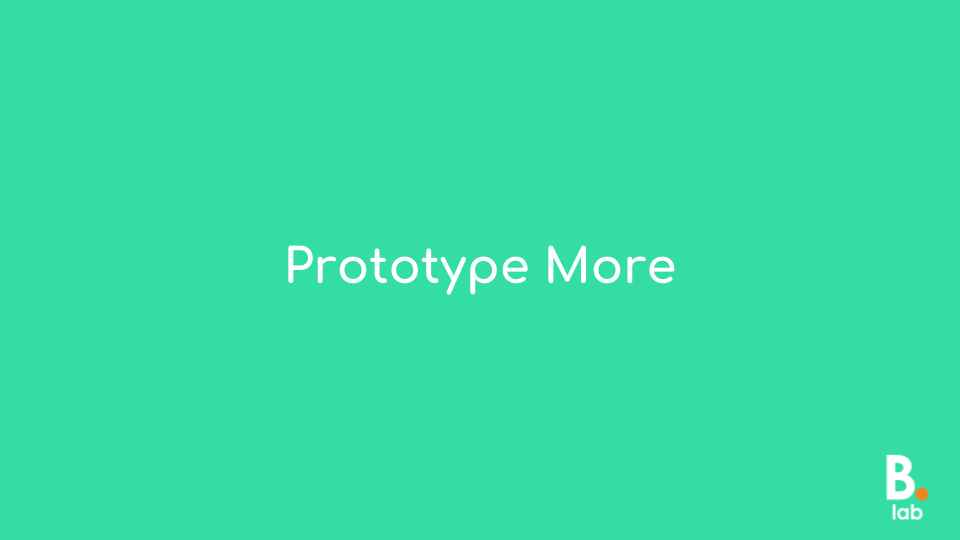We’re always talking about the value of design and prototyping - Simon wrote the blog ‘New Years Resolutions - Prototype More, Test Often & Pilot Less’ about the very subject a few months back, giving readers an insight into some of the methods we use and processes we follow.
Last Wednesday we ran a design session and mocked up a prototype in 60 minutes.
This wasn’t just any ordinary design session though.
No, we broadcast it live on social media for all to see.
We were really pleased to co-host SOChatHour by fellow housing pioneers Amy Nettleton and Asif Choudry with the theme being on innovation within the home ownership model. When we were chatting to them about how we wanted to run this, we were really keen to do something a bit different, something that would engage the #SOChatHour community and spark a conversation.
You may remember back at the end of November, we did a live lunchtime edition of #blabchat which we found went really well, as we were able to interact in real time with the community. This is something we’ve wanted to do more of, so we were delighted when Amy and Asif suggested we do a live stream.
In our mind the aim was simple - blend the usual 60 minute Twitter Q&A with a design session that would produce a ‘rough & ready’ prototype by the end. Rather than bringing our own ideas to the table, we did what any true designer would do and crowdsourced from the general public which areas they would like us to work on through a good old Twitter Poll released a few days before the main event.
As a little refresher, when we are talking about prototypes, we’re referring to a flexible tool which can be deployed at various stages of the design process. At its most basic, prototyping can be as simple as modelling a concept during an idea generation session - creating an ’artefact’ to aid creative thinking or help communicate an idea. Generally speaking, prototyping is about learning quickly and as a design tool, it can be a simple as a sketch or paper mockups, through to a more ‘high fidelity’ finished article, such as a wireframe or new product idea. Either way, it’s a cheap and disposable way for gathering feedback quickly and iterating concepts on the fly through getting a feel for how a service or product might work using minimal time and effort.
In our live session, Tom and Simon worked with colleagues from our sales teams (take a bow Kirsty and Amanda!) to scoping out very quickly any problems or opportunities we could explore further relating to customer experience around sales and marketing, framing these into three how might we questions, which were:
How might we improve the home viewing experience for customers whilst in the show home?
How might we improve the home viewing experience for customers whilst in their current home (or other location)?
How might we improve the home viewing experience for customers whilst in the sales office?
Framing opportunities in this manner, meant they were then able to quickly map out potential prototypes we could mock up, which ranged from 360 degree walkthroughs of properties for sale to deploying Augmented Reality over site plans to give customers more information on what the site might look like and the vicinity to local amenities.
During the 60 minutes, we managed to:
demonstrate the drone and work up an idea to provide prospective customers with the opportunity to have the experience of flying the drone over their prospective new neighbourhood;
demonstrate app based technology that enables you to create your own 360 immersive pictures which can be viewed using consumer level technology;
mockup some screen shots to help us talk about how augmented reality could be used during live/in-person show home viewings and also to bring printed media/sales brochures to life and
use consumer level Virtual Reality technology to demonstrate how immersive experiences could be deployed in a sales and marketing arena to help customers in making buying decisions (this was the putting Amy in a Shark Tank part - about 25 minutes in, well worth a watch!)
“The items we demonstrated and mocked up on the night aren’t polished enough to be immediately deployed, but this was exactly our point....”
The most important thing was to demonstrate how we can use tools that are readily available to the sector to start that journey and wider conversations around how we can work together. The great thing was the feedback (both on the night and after) has been overwhelmingly positive and shows the value of working out loud and pushing the boundaries together!
If you missed the live design session, you can catch up on it here - it’s a good one, I promise! And if you are keen to work with us on developing further prototypes, we’d love to hear from you - after all, sharing is caring!





